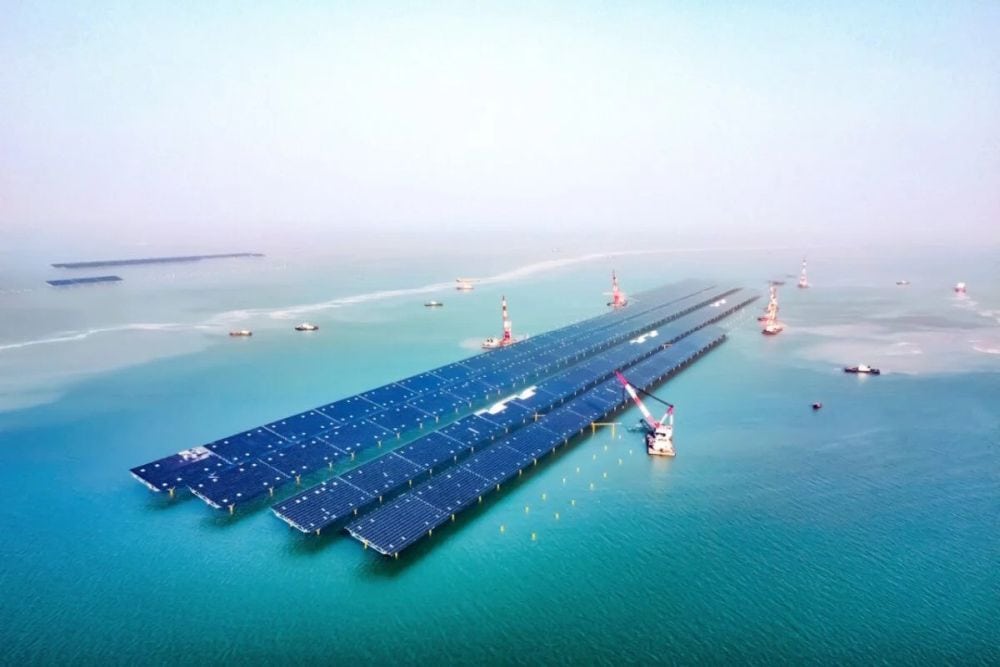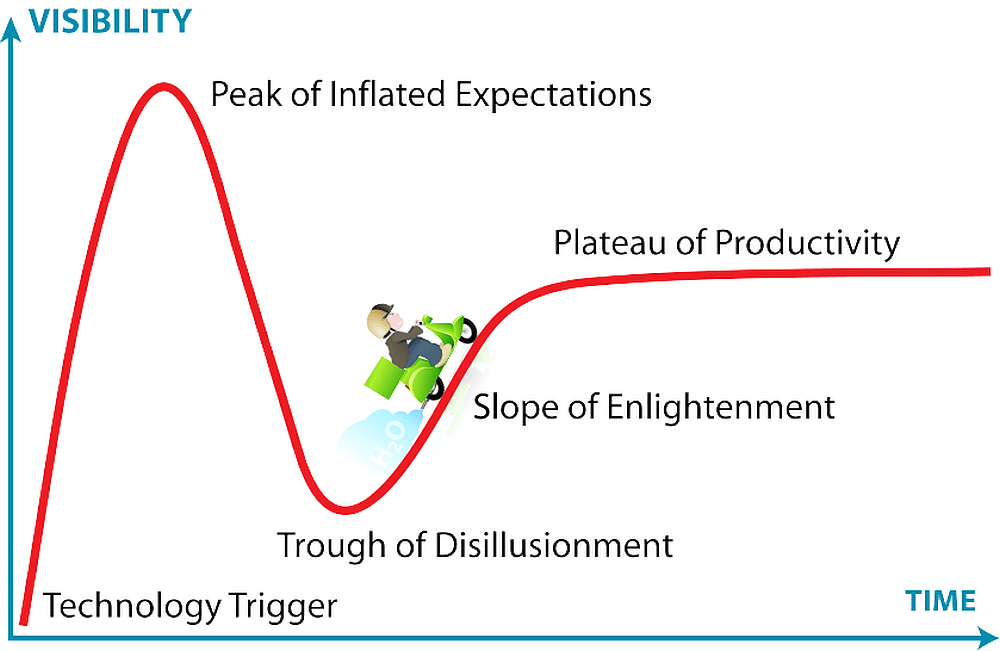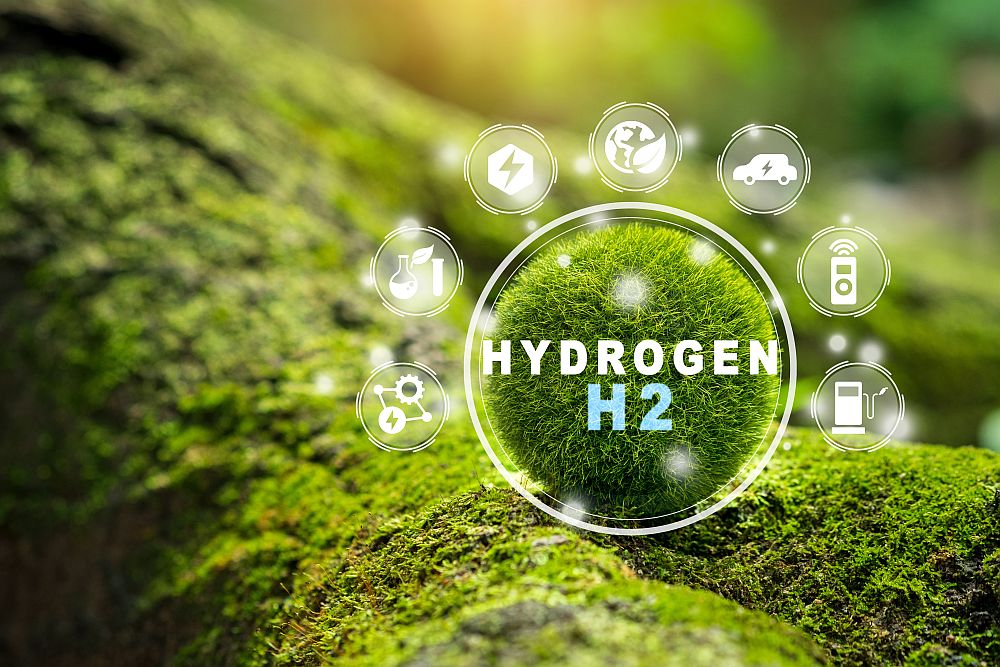
[Image above] In November 2024, China’s CHN Energy went online with the world’s largest open sea floatovoltaic system. The system, which boasts 1 gigawatt of power generation, combines fish farming with solar power generation to enhance utilization of the marine area. Credit: CHN Energy
Since their invention in the 19th century, photovoltaic panels, more commonly known as solar panels, have improved significantly in terms of conversion efficiency, from only about 1% to around 20%. These improvements have allowed solar panels to steadily gain in popularity over the past few decades as a relatively affordable alternative to fossil fuels.
But as solar technology becomes more popular, one continual challenge is figuring out where to install these systems. With efficiencies just over 20%, a large number of solar panels is needed to convert enough sunlight to fulfill electricity demands, and these panels require large, flat areas for installation.
Floating photovoltaics, or floatovoltaics, are solar panels that are installed on top of bodies of water rather than land, and they may offer a solution to finding long-term homes for solar panels. In today’s CTT, we’ll discuss how floatovoltaics overcome some of the challenges of traditional solar installations, overview recent floatovoltaic developments around the world, and consider some possible downsides of these systems.
Solar installation challenges
Though estimates suggest that covering all residential rooftops globally with solar panels could generate enough electricity to sustain the world, this solution is not realistic. The cost of solar power varies by region, and global electricity consumption is set to increase at an average of 3.4% through 2026.
In the United States, installing solar panels on top of warehouses and distribution centers are another possible approach, according to a report from the Environment America Research & Policy Center and Frontier Group. These buildings are already primed in both structure and position to reap the benefits of solar panel technology—however, it is difficult to discern how many of these buildings the U.S. has.
Another solution to increasing solar panel technology is creating more solar farms, but this idea has faced resistance from the public due to the amount of viable farmland that solar panels require.
Agrivoltaics, which is the concept of planting crops underneath raised solar panels, could benefit both agriculturists and solar energy enthusiasts. Agrivoltaics works well for crops such as lettuce, hog peanut, alfalfa, yam, taro, cassava, and sweet potato—but not all crops thrive in shady environments. Customizing solar panels to both absorb specific wavelengths and provide optimal wavelengths for photosynthesis is possible, but this approach is still a developing concept.
Enter floatovoltaics, which first emerged in the U.S. at a California vineyard in 2008. The concept is relatively simple: the solar panels are fastened together and then anchored to the bottom of a body of water. It is especially ideal for regions that are densely populated but have access to large bodies of water, such as many countries in Asia. As a result, many Asian countries lead the floatovoltaic market, with Japan housing 73 of the 100 largest floating solar plants as of 2019.
Growth of floatovoltaics around the world
Since our last CTT post on floatovoltaics in 2021, many new developments have taken place in the floatovoltaics field.
In November 2024, China’s CHN Energy went online with the world’s largest open sea floatovoltaic system, boasting 1 gigawatt (GW) of power generation in Shandong Province. Coincidentally, China is also a leading country in the implementation of floatovoltaic systems.
In early 2024, Singapore-based HEXA Renewables and Ciel & Terre completed the launch of a coastal floatovoltaic system in Taiwan. The system is estimated to help power 74,000 Taiwanese households while also helping the country reach its goals of 20 GW renewable energy capacity by 2025.
Southeast Asian countries such as Thailand, Indonesia, and the Philippines are also anticipated to make waves in the floatovoltaic industry. The Laguna Lake in the Philippines has the potential to house floatovoltaics on a large scale, and construction plans are already underway for early 2025.
Floatovoltaics can also work well with existing structures such as hydropower plants, like in Thailand, where the Sirindhorn dam floating solar farm combines both solar and hydropower to generate 45 MW of electricity. The project is part of a series of hydropower solar farms by the Generating Authority of Thailand, which aims to help propel Thailand toward total carbon neutrality by 2050.
Indonesia also launched one of the world’s largest floating solar panel systems in 2023 at the Cirata reservoir, southeast of Jakarta. The system works in tandem with a hydropower plant and has plans to be expanded to help propel Indonesia toward even more renewable energy goals.
As far as domestic developments go, a few large floating solar projects have debuted in the U.S., although there are still many opportunities for floatovoltaics to make waves. For example, Healdsburg, Calif., saw a large floatovoltaic system go live in 2021, with an estimate of 8% of the city’s power needs being met by the project.
In 2023, the Canoe Brook Reservoir in Short Hills, N.J., unveiled an 8.9 MW array of floating solar panels. The power generated is estimated to bring electricity to 1,400 homes in the area while also working with the local water treatment plant. Other projects are underway in Cohoes, N.Y., and Fort Liberty, N.C.
Although none of the floatovoltaic projects in the U.S. generate more than 10 MW of electricity on their own, a new open-access study by National Renewable Energy Laboratory researchers outlines the potential for floatovoltaics in federally controlled reservoirs. The study estimates that utilizing these reservoirs could generate anywhere from 861 to 1,042 GW direct current (GWdc), which would cover more than half of the U.S.’s needs for a decarbonized grid—no warehouse roofs required.
The open-access paper on federal floatovoltaic systems, published in Science Direct, is “Floating photovoltaic technical potential: A novel geospatial approach on federally controlled reservoirs in the United States” (DOI: 10.1016/j.solener.2024.113177).
Downsides of floatovoltaic systems
Despite their potential, floatovoltaics still come with a myriad of concerns, from anchoring issues to maintenance safety and unpredictable weather scenarios. Additionally, a recent open-access study reveals the potentially negative effects on carbon emissions that floatovoltaic systems may have when installed on smaller bodies of water.
Researchers at Cornell University conducted the study, which found that installing floatovoltaic systems on smaller bodies of water, specifically ponds, impacted greenhouse gas emissions in those aquatic ecosystems. After installing floatovoltaics, the ponds showed higher dissolved CO2 and CH4 concentrations, lower temperatures, and severely low levels of oxygen. These outcomes can negatively impact freshwater biodiversity, among other sustainability issues.
In light of these findings, “A holistic understanding of the ecological and biogeochemical impacts of FPV [floating photovoltaic] deployment is needed, and these impacts should be considered not only for the waterbody in which FPV is deployed but also in the broader context of trade-offs of shifting energy production from land to water,” the researchers write.
Despite these challenges, overall, floatovoltaic systems remain a promising technology in the U.S. and beyond, offering a way to preserve agricultural or populated land while also making strides toward a clean energy future.
The open-access paper on downsides of floatovoltaic systems, published in Environmental Science & Technology, is “Immediate effect of floating solar energy deployment on greenhouse gas dynamics in ponds” (DOI: 10.1021/acs.est.4c06363).
Author
Helen Widman
CTT Categories
- Energy
- Market Insights
Related Posts
Hype cycles: The uphill climb for hydrogen bikes
June 26, 2025


